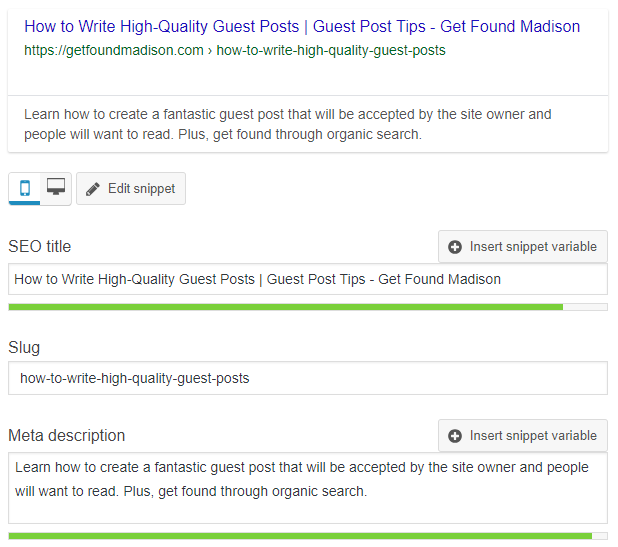We get pitched on guest posts all the time on our site. The pitches are often terrible and so are the submissions. As a result, we’ve drastically reduced the number of guest posts we accept. They often create extra work for us, instead of providing us free value in exchange for great SEO links.
But that’s not how guest posts have to be. They can be a great opportunity that’s mutually beneficial to both the writer and the site owner. If you’re interested in writing a guest post for someone and you want it be awesome, here’s how to do it.
1. Research keywords
If you want the site owner to accept your pitch, then your post has to add SEO value to his or her site. In order to do that, you need to do some keyword research, using free tools at the very least.
Write on a topic that people are actually searching for – or better yet, asking specific questions about (use Answer the Public to identify those). If your post isn’t backed by keyword research, then you’re missing a major part of content marketing: getting discovered through organic search.
2. Write an SEO title and meta description
Whoever publishes your post will have to do this if you don’t, so save them some work and prove that you know your stuff by taking care of it yourself! The SEO title should be 60-65 characters, and it must include your target keyword(s), preferably at the beginning. Your meta description can be up to 160 characters, and it should also be optimized for your target keyword phrase.
Make both the title and description clear and understandable, but also compelling or intriguing enough to merit a click from a searcher on the SERP. In order to be found through organic search, people have to read these and be convinced that your post is worth checking out.
3. Optimize your post for search engines
Ensure that the whole post is well-optimized. Use your keyword phrase without stuffing. Use subheadings that make sense. Include an image that is licensed for use, and rename it to use your keywords. The image name should hyphens, not spaces or underscores, and it should not contain stop words.
4. Create a unique and outstanding post
Your goal is to write a terrific post that has no equal across the world wide web. Your post should be unique, and it should be the single most authoritative explanation of its given topic. Brian Dean of Backlinko calls this the skyscraper technique.
There’s no SEO value in regurgitating a post that other people have already written hundreds of times. Another bland, unoriginal post will not stand out, and will not rank highly in search engines. That’s why your post must be a skyscraper among the city of related articles.
[rankya_youtube_schema id=”pqe7U4YOGOA” videotitle=”Off Page SEO Case Study: 110% More Traffic in 14-Days” desc=”Here’s how it works. First, you find content in your industry that’s already performed well. You can look at the number of comments, social shares and links. While social shares and comments are important, we’re focused on links. Believe it or not, but some content generates a ton of Tweets and Facebook Likes and few links. You want to zero-in on content that’s acquired white hat links.” durationmin=”05″ durationsec=”27″ uplod=”2014-07-03″ rating=”TRUE”]
5. Proofread and edit your post
There’s nothing worse than receiving a guest post submission and then having to waste time on basic editing. Don’t embarrass yourself by submitting a half-baked guest post with simple grammatical and spelling errors.
In addition to basic proofreading, make sure the writing is strong. Use active verbs and avoid passive voice. Don’t write long, rambling sentences that are difficult to follow.
Seriously. If writing is part of your job, then you need to write well.
[BONUS] 6. Offer to create the post in the site’s CMS
Assuming you have followed the tips above, this is the last step to the finish line. Even in a user-friendly CMS like WordPress, drafting a post is often tedious due to formatting and image placement/optimization.
To get the site owner to say “yes” to your guest post, you need to make things as easy as possible for him or her. Offer to create the post yourself if they’re willing to grant you contributor access. Then the only thing they have to worry about is looking it over and clicking “publish.”



